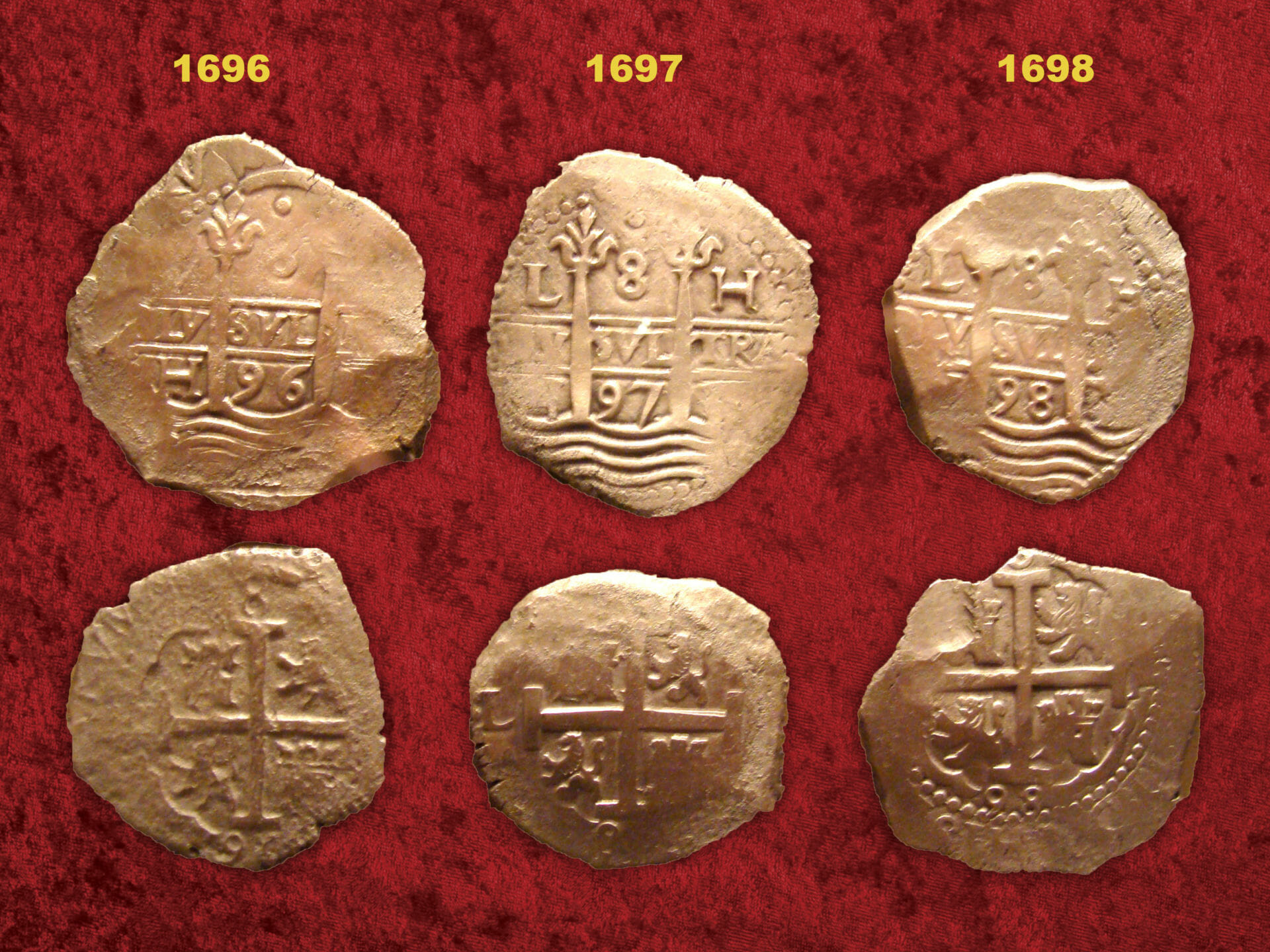Our treasure offering for April can be found on display at the Museum of Florida History in Tallahassee, Florida. The coins (or more accurately, cobs) depicted are silver 8 reales from the Spanish colonial mint at Lima, Peru. The Lima mint opened in 1568 and operated sporadically until 1592. After a 70 year hiatus it reopened without proper authorization in 1659, closing again in 1660. To supplement silver production at the other El Peru mint at Potosi, the mint at Lima began striking silver coins again in 1684. The mint continued striking cobs until 1752 . Lima coins produced before 1700 are actually more available than later dates. Lima silver coins after 1707 are scarce. At least one scholar (Alan K. Craig, in his treatise “Spanish Colonial Silver Coins in the Florida Collection,” University Press of Florida, 2000), suggested that, at least to a minor extent, the scarcity of 1707-14 coins may be due to losses occasioned by the 1715 shipwrecks.
Our featured coins, all produced before 1700, have certain characteristics such as excellent die engraving, relatively round shape and lack of striking irregularities. When compared to coins minted at other colonial mints, particularly Potosi, it can be concluded that the mint workers in Lima were better artisans. It must be remembered that these featured coins were subjected to the effects of saltwater corrosion which can alter the surfaces to some degree
The obverses of all of these coins have exceptionally clear dates, pillars and waves. The numeral “8” on the obverse denotes the denomination, here 8 reales. The “L” ,although not clear on all the coins shown here, designates the mint (Lima) and the “H” is the assayer (Captain Francisco Hurtado). Hurtado was the sole assayer in the years 1696 through 1698. The “Plus Ultra”( or “More Beyond”) in the center of the obverse is also identifiable.
The reverse features a Jerusalem cross, lions, and castles which was a standard feature of Spanish colonial coins. Also seen here is a tiny date at the bottom of the reverse on each coin which matches the date on the obverse.
You can get a Virtual Tour of the Museum of Florida History here. Much of the information used in this article was from the book written by Alan K. Craig which was cited herein. It is an excellent treatise and highly recommended.


